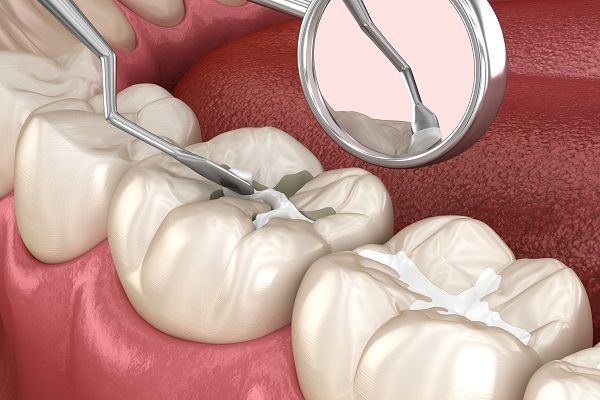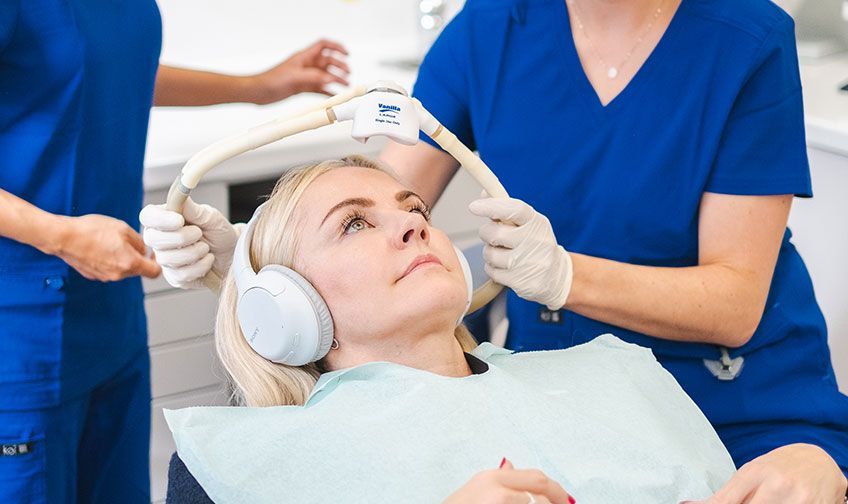Whether you’re not particularly fond of needles or the dentist, both can be necessary for receiving proper dental care for the sake of your oral health and overall health. Fortunately, dentists are trained to provide many solutions to help manage pain and ease anxiety in patients who require more extensive dental treatment. One of these solutions is IV (intravenous) sedation. IV sedation can be used for a number of dental procedures, such as oral surgery and wisdom teeth removal. While you will need to consult with your dentist about whether you are a candidate for IV sedation, we will help you understand the basics — including what IV sedation is, the levels of IV sedation and how IV sedation works with wisdom teeth removal.
What Is IV Sedation in Dentistry?
IV sedation — also known as conscious sedation — is a middle-of-the-road type of sedation that makes you less aware of the procedure without making you completely unconscious, as does general anesthesia. The Australasian Medical Journal (AMJ) notes that IV sedation is generally used for patients with high levels of dental anxiety. A trained dentist can administer this form of sedation quickly with the ability to effectively adjust the dosage as needed. However, it’s important to ensure that your dentist is trained in IV sedation before any procedure, as not every dentist office will be able to provide this option.
As the name implies, IV sedation is administered intravenously, which means through a vein. During your dental procedure with IV sedation, you may be conscious enough to perform basic commands and give simple responses to your dentist. You can expect to be able to still breathe on your own with IV sedation, and your heart rate won’t need to be monitored during the procedure.
Levels of IV Sedation
In combination with the sedation, you might also be intravenously given an analgesic — a medication for pain relief, or analgesia. Using IV sedation with an analgesic may be the case for more intensive oral procedures, such as wisdom teeth removal. The patient may experience drowsiness from analgesia, but will not be completely unconscious even with stronger IV sedation. It’s important to remember that an analgesic is not always used in combination with sedation, so you will need to discuss the details of your procedure and sedation with your dentist beforehand.
The American Society of Anesthesiologists lists multiple levels of IV sedation that a patient may receive depending on their level of anxiety and the nature of the dental procedure. The primary levels include:
- Minimal sedation — Minimal sedation keeps you awake but relaxed. You will be more alert and able to both understand your dentist and follow his or her directions during the procedure.
- Moderate sedation — With moderate sedation, you may feel drowsy and possibly fall asleep. It’s possible you may only remember parts of the procedure or none at all.
- Deep sedation — While you won’t be fully unconscious, you will be likely to sleep through most of the procedure with deep sedation and have very little if any memory of the procedure.
In addition to the type of dental procedure you will be receiving, your age, medical history and level of anxiety will also affect the level of IV sedation your dentist will use — if he or she chooses to use IV sedation at all. You may be a better candidate for a different sedation method, such as inhaled or oral sedation.
IV Sedation and Wisdom Teeth Removal
Because wisdom teeth removal is a more involved type of oral surgery, deep IV sedation is the most common type used. While general anesthesia puts patients into a total unconscious state, it comes at higher risk and needs to be administered by a licensed anesthesiologist, and the facility must have hospital-grade monitoring equipment. Again, not every dental office can offer general anesthesia, and this type of sedation is appropriate for only certain cases — such as patients with autism.
IV sedation works as a form of local sedation to make patients more relaxed and less aware of stressors during the procedure. As previously discussed, IV sedation can be combined with an analgesic. Administering both sedation and an analgesic intravenously can be very effective for making a patient relaxed and less aware during an intense procedure like wisdom teeth removal.
Average recovery time after IV sedation is relatively quick. Most people “come to” almost immediately after removal of the IV line, but will remain groggy for several hours after. For this reason, your dentist will tell you to have someone drive you to and from the appointment, and if possible stay with you until the sedative wears off. You should not prepare food or perform household chores that day, as your reflexes and judgement will be affected. You may also be told to not make major purchases or sign legal documents. If you’re employed, you’ll need to take the day off.
Overall, IV sedation is a relatively safe way for dentists to help patients relax during wisdom teeth removal or other oral surgery. Like all medical treatments, however, you will need to consult with your doctor and your dentist before choosing the right form of sedation and medical treatment, depending on any underlying medical conditions you may have.
As a patient, you have a right to ask and check for the following points with your dentist regarding IV sedation before wisdom teeth removal or any procedure:
- If your dentist is trained and qualified to administer IV sedation or any other sedation.
- Your medical history and any medications you are currently taking.
- Any and all questions you have about sedation and your dental procedure.
- If you have received and carefully read through a form detailing the risks of the sedation and the procedure.
- If the dentist has oxygen ready in the case of needing to reverse the sedation, and if your dentist will be monitoring your vital signs during the procedure.
- If your dentist is following all American Dental Association guidelines on dental care, procedures, and sedation methods.
To learn more about wisdom teeth removal, see our blog post, “ Is It Really Necessary to Remove Wisdom Teeth? ”
Qualified and Compassionate Dental Care in Chicago
If you’re in need of a complex dental procedure such as oral surgery or wisdom teeth removal, 24/7 Local Dentist is here for you with quality, compassionate care in Bucktown and Logan Square, Chicago. Our dentist, Dr. Nilofer Khan, and our periodontist, Dr. Waeil Elmisalati, have both completed extensive education and training in order to provide the highest level of care to all patients. Learn more about Dr. Khan and Dr. Elmisalati ’s qualifications and passion for dentistry, as well as about our dental services — and contact us today with questions or to schedule your next dental appointment !











Disclaimer
247 local dentist is a dentists referral service. We connect you with dentists in your area. All dentist are operated independently of 247 local dentist. It is the responsibility of each user to verify that the dentist connected with meets all licensing and insurance requirements in that jurisdiction.
Photos on 247 local dentist are for design purposes only and do not represent the dental services in your area.
Services will not be available in all areas, and when services are available, they may vary depending on providers available.